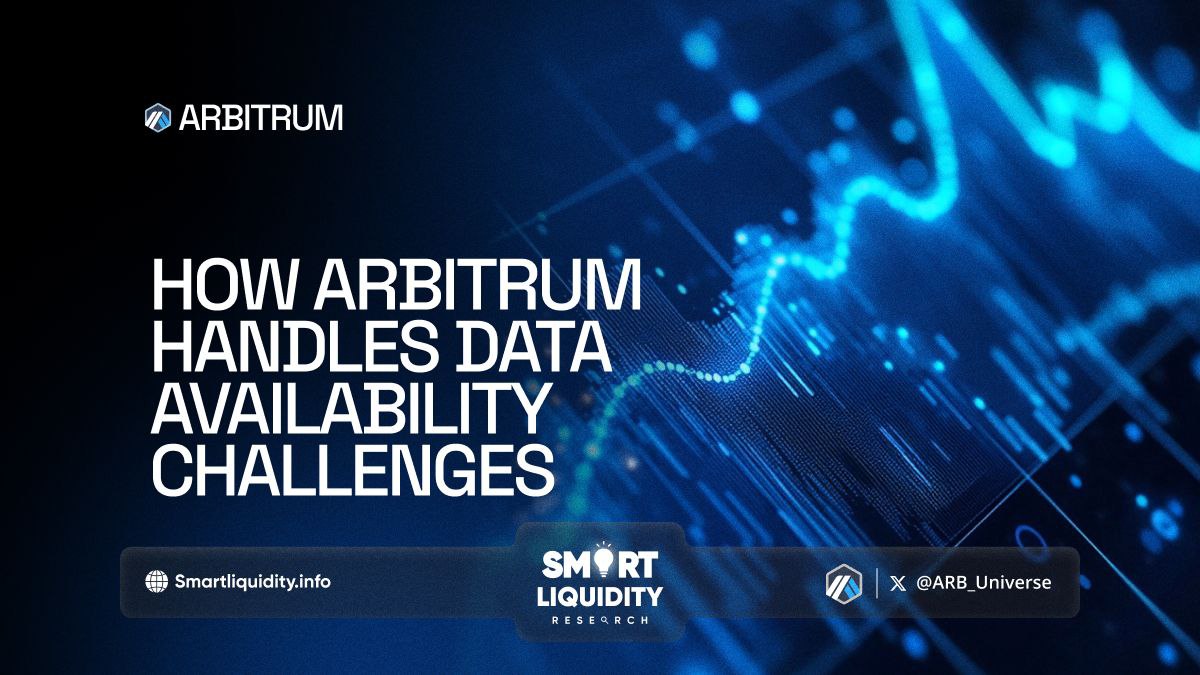How Arbitrum Handles Data Availability Challenges


How Arbitrum Handles Data Availability Challenges! Arbitrum has emerged as one of the leading solutions in the Ethereum ecosystem, addressing the pressing issue of scalability. However, beyond simple transaction throughput, another critical challenge that Layer 2 (L2) solutions face is ensuring data availability.
Without proper handling of data availability, the integrity of transactions and the overall security of the network can be at risk. This article explores how Arbitrum tackles these challenges, ensuring a robust and scalable experience for decentralized applications (dApps) and users alike.
The Importance of Data Availability in Layer 2 Networks
Data availability refers to the ability to make transaction data accessible for users and validators on a blockchain. In traditional Layer 1 (L1) blockchains like Ethereum, data is embedded directly on-chain. But as networks like Ethereum became congested, L2 solutions like Arbitrum emerged to offload transaction processing, improving speed and lowering gas fees. Yet, these L2 networks face a unique challenge—ensuring that the data required to validate transactions remains available and secure.
Without proper data availability, malicious actors could manipulate transaction data, leading to fraud or network failure. Therefore, managing this challenge is paramount for the success of any Layer 2 scaling solution.
Arbitrum’s Unique Approach
Arbitrum leverages Optimistic Rollups, an L2 scaling solution, to manage data availability and transaction verification. This method assumes transactions are valid but allows for a dispute resolution period where transactions can be contested if incorrect data is suspected.
Let’s break down how Arbitrum’s architecture ensures data availability:
- Data Commitment on Ethereum
Even though Arbitrum executes transactions off-chain, it posts proofs and compressed data to Ethereum, ensuring that critical transaction information is still secured on the main chain. This data commitment to Ethereum allows for any party to audit and verify transactions, maintaining transparency and trust. - Validators and Sequencers: Arbitrum uses validators to process transactions and sequencers to organize transaction batches. Validators ensure data availability by monitoring and ensuring the correctness of the transaction state. In case of a data unavailability event, the dispute mechanism can be triggered, allowing participants to provide the correct data and invalidate false transactions.
- Fraud Proofs: The use of fraud proofs allows anyone to challenge a suspicious transaction. If a challenge is successful, the invalid transaction is rolled back, and the correct state is restored. This mechanism acts as a safeguard, ensuring that malicious attempts to alter data are swiftly countered.
Arbitrum’s Data Availability Committee (DAC)
Arbitrum has proposed a novel approach to enhance data availability through its Data Availability Committee (DAC). The DAC is a reliable team tasked with maintaining transaction data off-chain, yet capable of sharing it on-chain when needed. By decentralizing data storage across multiple parties, the likelihood of a single point of failure is reduced. In case of network component failure, this method maintains system resilience.
Optimizing for Scalability Without Compromising Security
One of the key advantages of Arbitrum’s approach is its ability to optimize for scalability while maintaining security. The Optimistic Rollup model and data availability strategy enable Arbitrum to provide high transaction throughput and lower gas fees, supporting decentralized application adoption.
By offloading transaction processing to Layer 2, while committing data to Ethereum, Arbitrum balances the need for speed with the security and decentralization of Ethereum’s main chain.
In Summary
Arbitrum’s approach combines Optimistic Rollups, validators, fraud proofs, and a Data Availability Committee to address data availability challenges in Layer 2 scaling solutions, ensuring secure, accessible, and transparent transaction data.
As Arbitrum grows, data availability will be crucial for its success and Ethereum’s scalability. The balance between scalability, security, and data availability is delicate, but Arbitrum’s design shows that with innovation, it is achievable.




